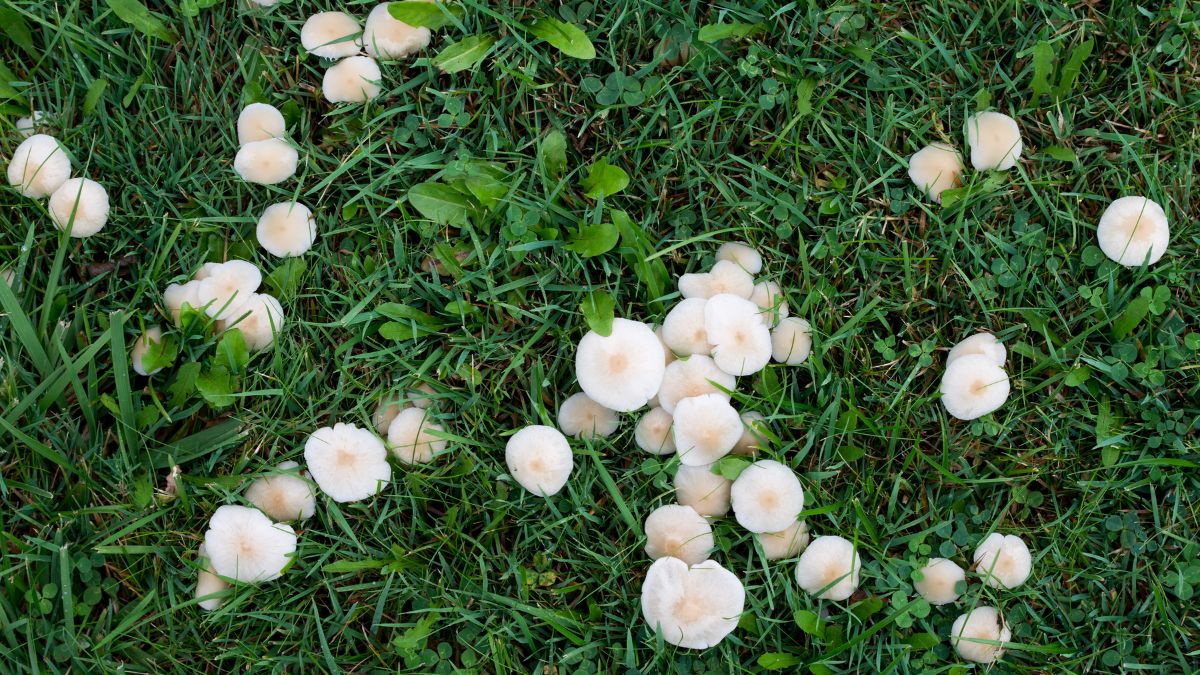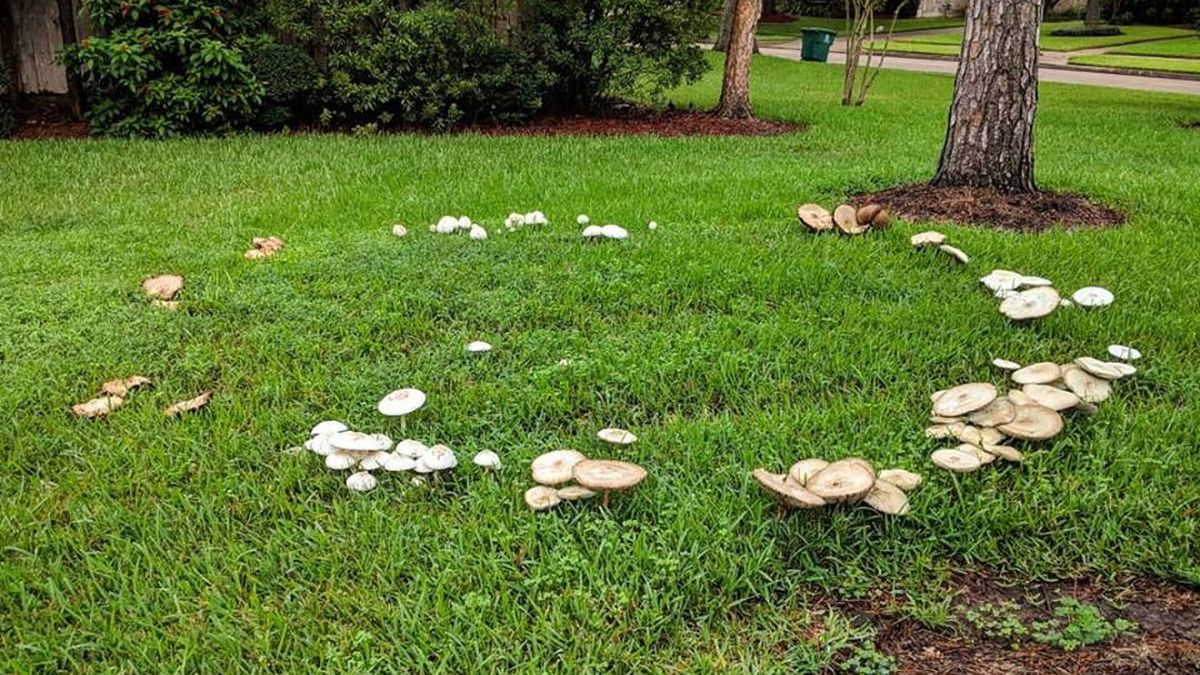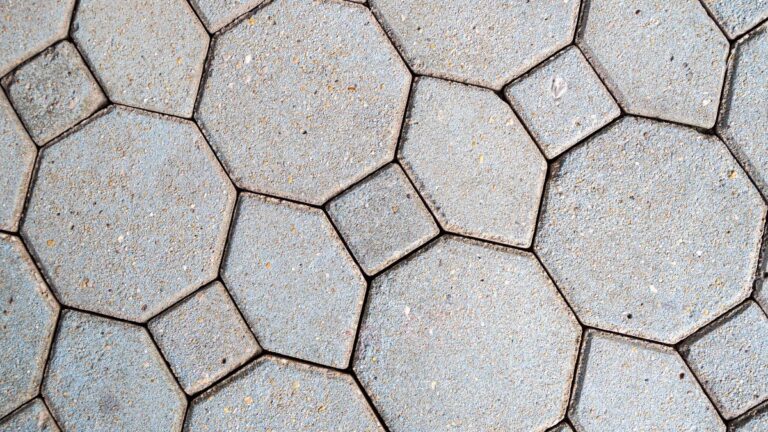I have noticed people have a mixed reaction to the emergence of mushrooms on their garden lawn.
There are those whose first reaction is that of elation. Some people just love mushrooms in whatever form.
Then there are those that immediately start to worry.
Will mushrooms ruin the overall health of the garden? Why did they appear in the first place? What does it all mean?
So today, let me try to answer the age-old question – are mushrooms a sign of a healthy lawn or something potentially dangerous?
Are Mushrooms a Sign of a Healthy Lawn
To be honest, there is no simple answer to this question.
Sorry to be boring but I need to repeat what you will read at most places.
Mushroom growth in your garden lawn can be both good news or in some rare cases, possibly risky.
To fully comprehend what presence of mushrooms could mean for your garden, you need to learn the following:
1) Why do mushrooms appear in your garden in the first place?
2) Why mushrooms can indeed be a sign of a healthy lawn?
3) Why mushrooms in some cases can pose a risk to the health of your garden and family members?
Once you understand the above, you will be able to conclude yourself whether the mushrooms growing on your lawn are good or bad.
Why do mushrooms appear on your garden lawn in the first place?

Mushrooms are part of the fruiting bodies of fungi.
While I am not going to get into detail on fungal structures for now, presence of fungi in the soil particles in your garden is the main reason for appearance of mushrooms on your lawn.
So what causes fungi to grow in your garden lawn?
Your garden soil will have fungi as a result of any organic material that has been there for a while and has the right conditions to grow quickly.
Organic material can be anything from decomposing twigs, old grass clippings, dead tree roots to animal waste, compost, organic debris, food waste etc.
Fungi thrive in damp conditions. They don’t just grow on the soil surface, they can grow on tree stumps, dead trees or any woody material.
Dampness in garden soil can be due to various reasons. This includes humid weather, excess moisture due to poor drainage or shady conditions, heavy rain, overwatering, excess thatch etc.
Heavy rain can also result in excessive dampness and moisture build-up.
Therefore, organic waste plus damp and humid conditions results in the growth of fungi, which in turn end up causing mushrooms to appear on your garden lawn.
What are fairy rings in lawns and why do they appear?

You may have noticed that sometimes, mushrooms grow in your garden lawn in a circle.
These circles or arcs of mushrooms on the lawn grass are known as fairy rings.
Fairy rings are a part of several myths, legends and fantasy stories.
This is mainly due to the beauty of these rings and their mystical appearance.
We know mushrooms grow due to the presence of fungi.
Fungi reproduce through microscopic spores. Sometimes, a fungus ends up sprouting multiple threads known as fungal mycelia.
The mycelia, grows under the surface of the soil in a round, circular pattern. In time, they start to reproduce.
Since, mushrooms are a reproductive part of fungi, they start to sprout at regular intervals in a circle forming a fairy ring.
Whether these mushroom fairy rings are healthy for your lawn or not, you cannot argue against the beauty of their sight which is absolutely full of wonder.
Why mushrooms can indeed be a sign of a healthy lawn?
The overall consensus amongst lawn care experts is that appearance of mushrooms can indeed be a good sign.
It indicates a healthy ecosystem in your lawn. Fungi and mushrooms help break organic matter and create healthy soil.
They help release nutrients from organic debris which spreads within the soil leading to thicker and greener grass.
Your garden relies on microbial activity for healthy plant growth. The presence of fungi leading to the growth of mushrooms aids in nourishing microbial activity and is overall a good thing for the wellbeing of the garden.
Think about this. Mushrooms naturally grow in forests. What we see as wild mushrooms are in fact a crucial element in the natural ecosystem that helps forests rejuvenate and recycle on their own without any intervention from human beings.
It is the mushrooms and fungi activity that converts all dead wood, plant and animal waste into nutrients for the regrowth of trees and other forest elements.
They replenish the soil with nourishing nutrients, giving it the boost it needs to continue manage the entire ecosystem of the forest.
These mushrooms appear and even disappear on their own after the job is done.
This is a natural process. It has been developed by nature itself.
Therefore, emergence of mushrooms in your lawn is mainly a sign of nature doing its job.
Why mushrooms in some cases can pose a risk to the health of your garden?
As established already, you do not have to worry about mushrooms growing on your garden lawn.
Typically, new mushrooms appear and fade away on their own. The fungi going through its reproduction process will only enrich your soil and strengthen grass roots.
Their help with decomposing organic matter results in providing an essential food source to plants, necessary for their growth.
However, there are two instances when fungus growth and appearance of mushrooms can pose a risk to the health of your garden or your family members.
Poisonous Mushrooms
In most cases, backyard mushrooms are non-poisonous.
You will usually see varieties such as white mushrooms or shaggy ink cap mushrooms growing on your lawn.
However, in very rare circumstances, given the right conditions and several other factors, you could get toadstools or poisonous mushrooms growing in your garden.
There are no scientific ways to distinguish between a poisonous and non-poisonous mushroom. A simple homeowner or gardener will definitely not be able to tell the difference.
Now, even if the mushroom in your garden was poisonous, it will not pose a risk till you actually try to cook and eat it.
On the other hand, if you have pets who you think might nibble at the mushrooms, that could in fact, be dangerous.
Little children can also get curious and touch these mushrooms. It may become a risk if they in turn put their hands inside their mouth without thoroughly washing them.
Hence, if you are worried about what your pets or little children may end up doing with the garden mushrooms, it may be a good idea to get rid of them.
Another thing to remember, even if the garden mushrooms are not poisonous, they are not edible so please do not try to cook with them.
Lawn Diseases
Mushrooms can actually make your grass healthier, greener and stimulate plant growth.
However, do keep a look out if the opposite is visible.
If you feel that the leaves of your plants have developed yellow spots, they have started to droop, there are signs of pale yellowish green grass or there are other plant health issues, you may be dealing with some type of lawn disease.
There are different species of fungi and they do not always act in a similar manner.
It is possible that the fungi in your garden is causing root rot and other issues.
While this is rare, it does happen from time to time.
If you are indeed dealing with species of fungi that are creating lawn diseases, you need to treat your soil to completely get rid of them. Just removing the mushrooms will not help in this case.
How to get rid of mushrooms and fungi from your garden lawn

Getting rid of the mushrooms that appear on your lawn is actually quite simple.
1) Wear gloves and simply remove the mushrooms by hand. Pull them from the stalk or cut them with a knife and carefully dispose in a trash bag.
Remember, mushrooms cannot be put in the compost pile. They will only end up feeding on organic matter, release spores and spread further.
2) Use your lawnmower to quickly cut your grass and remove mushrooms all at once.
3) Use nitrogen fertilizer on any decaying organic matter to quicken the process and cut off the food source for fungi or mushrooms.
4) Use homemade organic mushroom removers such as vinegar solution, soap water mixture or other liquids to spray over mushroom affected areas.
Do take care that you spray only on the mushrooms and bit of the surrounding areas as otherwise your healthy grass or plants could die as well.
5) If your lawn has been infected by a disease and you need to get rid of the fungi itself, then it is slightly trickier.
The best way to achieve this is to use fungicide chemicals that are safe for garden use.
First, carefully remove all the mushrooms. Then spray the fungicide all over your plants and grass.
As far as possible, use natural fungicides as I am not convinced if the chemicals used are 100% safe for gardening.
Do keep in mind that fungi will be back if they find ideal growing conditions such as high moisture, humidity, dampness, excess lawn thatch, decaying organic matter etc.
So you need to ensure that you minimize these conditions as much as possible for fungi and mushrooms not to return.
Final summary on mushrooms in your garden
Mushrooms appearing on your garden lawn is quite normal and a natural process.
Even with a new lawn and fresh soil, fungi slowly reproduce and spread resulting in mushrooms.
You will mostly see them grow in shady areas with poor drainage. They can grow on woody material or on your lawn grass.
Mushrooms are a sign of a healthy lawn ecosystem and nothing to be worried about.
The only two instances when they pose a risk is if in very rare conditions, you have poisonous mushrooms or fungi causing lawn diseases.
To get rid of mushrooms completely, you have to not just remove them and the fungi, but also ensure they do not have the right conditions needed to regrow in your garden.




